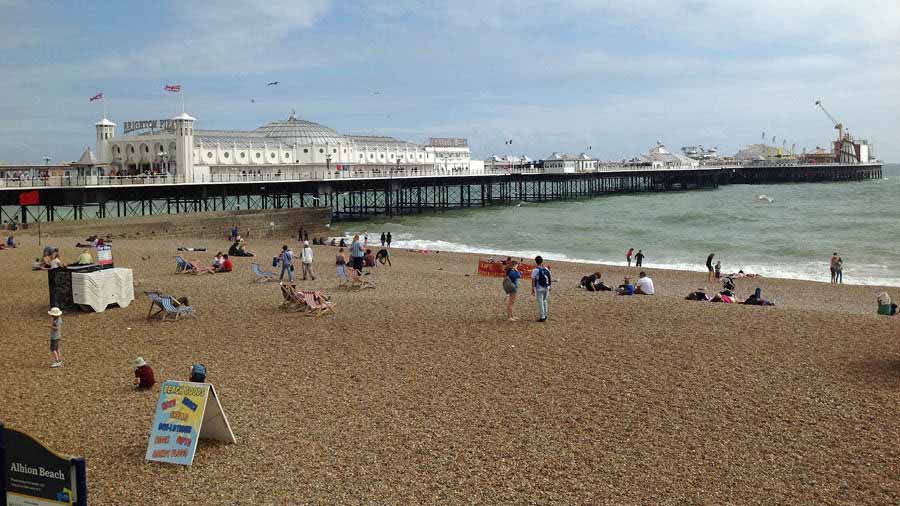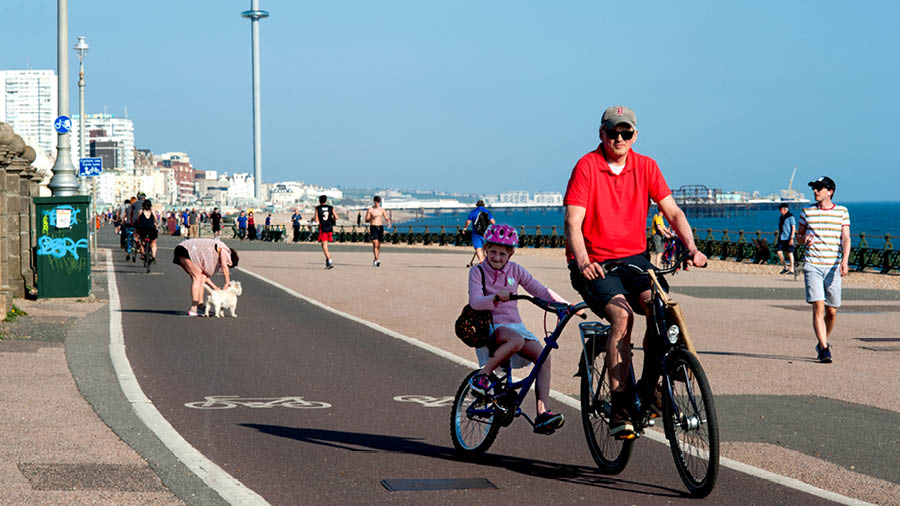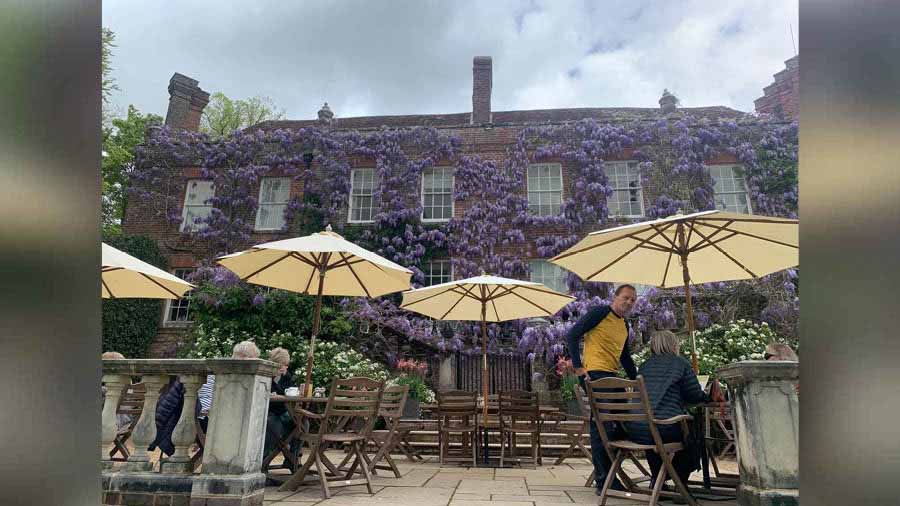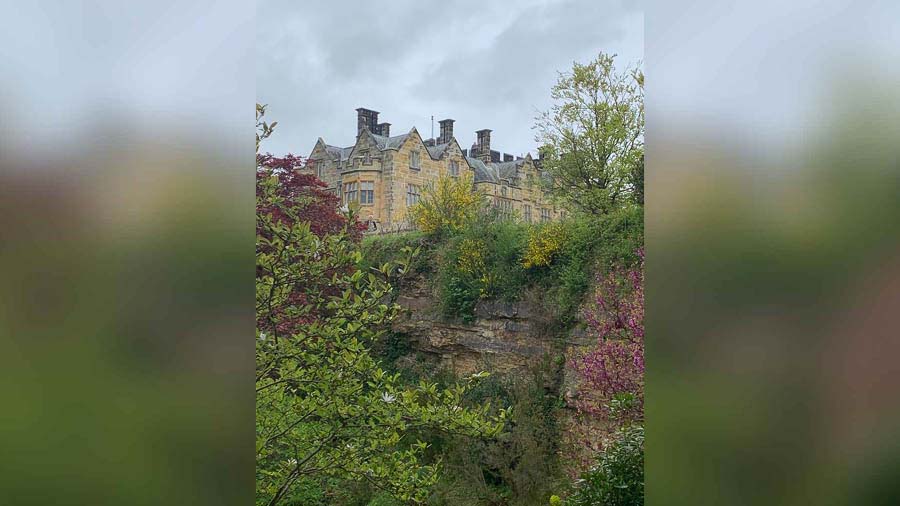We Indians love the UK – the legacy, whether politically correct or not, is familiar, as is the language. But very few of us venture beyond London unless we have family living there. One reason could be simple logistics. I grew up in London with friends now living all over England, but still find it a nightmare to coordinate travel to see them. Connectivity is a big issue – most railway stations are not traveller-friendly (stairs and lots of walking) and the price of tickets can be alarming. The only option is by road (hire a car or bribe some nice friend or relative to take you) if you really want to explore country life outside London. All that rain all year round means rolling green hillsides with picture-perfect villages, meadows that look manicured and forests bursting with bluebells like a Photoshopped calendar.

The open countryside of Sussex, with the River Ouse flowing through Shutterstock
The county of Sussex is an easy escape – just an hour or so from London with quaint villages, stately homes and beautiful gardens. I base myself in Brighton or Hove next door, simply because my family lives there and I went to Sussex University, so it’s familiar. I lived there way back in the days of the dinosaurs – when we read real books, made telephone calls from red booths and hadn’t a clue how to use a computer. We went to pubs, not bars, and drank tea, not cappuccino.
Brighton has hardly changed. It remains a charming British seaside town with a usable beach, albeit a bit stony, a laid back, slightly alternative lifestyle (probably with the biggest LGBTQ movement in the country) and a great café culture. It’s easy to get around by bus, taxi or on foot. There are regular trains from London and Gatwick airport and the off-peak fare is very reasonable.

Brighton Pier Karen Anand
A bit of history – in the late 18th and early 19th centuries, Brighton developed as a highly fashionable seaside resort where people came to bathe or “take” the waters rather like a modern spa town. This was also encouraged by the patronage of the Prince Regent, later King George IV, who spent much time in the town and constructed the Royal Pavilion. At that time, the introduction of steamships and railways permitted tourism to dedicated seaside resorts and passengers arriving by steamer could use a pier to disembark safely. Also, for much of the day, the sea was not visible from the shore, so the pier permitted holidaymakers to promenade over and alongside the sea at all times. The pier then became an integral part of British seaside resorts.

Fish and chips, and ‘rock’, sickly sweet batons of candy, which for the author, is as disgusting as it is nostalgic Karen Anand
Brighton Pier, newly renovated and built on the 19th-century original, still has an old-fashioned funfair, with candy floss and fish and chips, and is well worth a visit. Every seaside town in Britain has little shops selling what is known as “rock”, sickly sweet batons of candy and Brighton is no exception. For me, every bite is as disgusting as it is nostalgic.
The Royal Pavilion is an odd ‘Indianesque’ looking structure. It became a royal residence of George, in the late 18th century. He completely renovated it and commissioned something “Indian” as inspiration for the exterior, although he had never set foot in India or anywhere in the Orient. Queen Victoria, his niece, never liked Brighton or the Royal Pavilion and sold it to the town of Brighton.

The Royal Pavilion in Brighton Karen Anand
The Great Kitchen is very impressive. It had steam heating technology, ventilation and light as well as a huge mechanical spit for roasting meats, game and poultry. George, clearly a bit of a party animal, who had a reputation for extravagant entertaining, employed the famous French chef, Marie-Antoine Carême, to create huge confectionery centrepieces for banquets, as well as extravagant menus including one featuring 36 main dishes (mostly French) and 32 side dishes for the famous banquet to honour the Grand Duke Nicholas of Russia.
Culture done, head down to the seafront, which stretches 10kms from Brighton to Hove, with dedicated cycle lanes, bathers’ pavilions and spotless pavements. You can walk either right by the sea or on the road, much of which still has sweeping avenues and stunning squares of Regency architecture. The Regency style, typical of the late-18th and early-19th centuries, is characterised by grandiose pale stucco exteriors with Classical-style mouldings and big bay windows.

The seafront route from Brighton to Hove has dedicated cycle lanes, bathers’ pavilions and spotless pavements Shutterstock
My other favourite thing to do in Brighton and Hove is to scour the charity shops. When people downsize or simply get rid of anything old or unwanted, you typically donate the lot to a charity shop. Being an affluent area, the shops often have pre-loved, high-quality merchandise including designer bags or scarves or jackets!
To the Sussex countryside. I am always excited about visiting old friends, Carole and Ian Franks, in their stunning country house near Heathfield in East Sussex. Apart from the four acres of gardens, orchards, ponds, trees and flowers (they even have a robot lawn mower), it’s a chance to visit Pashley Manor, which is more about the 11 acres of gardens, tea room and sculptures than the house itself.

Pashley Manor in East Sussex Karen Anand
All the ingredients of the English country garden are present at Pashley – sweeping herbaceous borders, well-maintained lawns, box hedges, espaliered rose walk, a historic walled garden, bees, butterflies and small birds as well as moorhens, ducks and a black swan. Then, of course, the plants! Borders overflowing – the look changing through the seasons, but always abundantly filled, each garden is planted in a different colour theme. Pashley is also renowned for fantastic displays of tulips, roses and dahlias. If it’s summer, we troddle down to pick berries and cherries at a farm called Maynards in the village of Ticehurst. We eat pounds of ripe, juicy red cherries while we only pay for what goes in the punnets!

A variety of flowers in bloom Karen Anand
This year, we discovered Scotney Castle in what is known as a “picturesque garden” with a 14th-century moated castle and a Victorian country mansion – all in a beautiful wooded estate. It is considered one of the best examples of this type of garden in the UK and is spread over 780 acres! All these gardens and estates have clean loos, a good gift shop and usually exceedingly good tea rooms, where the cakes are top notch. The British don’t take food too seriously, but baking is something they get right.

Scotney Castle is a 14th-century moated castle and a Victorian country mansion – all in a beautiful wooded estate Karen Anand
If you would like to explore more in the British countryside, the first places to look are the National Trust and the Royal Horticultural Society websites and find out what’s where, opening times and special events. Even in London, there are plenty of things going on at historical Hampton Court (flower shows, artisanal fairs and so on) all summer and nearby Savill Gardens in Windsor. In fact, most villages outside London have pop-up fairs all summer long… in the middle of fields, in the grounds of stately homes and even in castles.
Karen Anand is a food and travel writer, author, food consultant and founder of Markets by Karen Anand, a curated gourmet lifestyle market that takes place across India.


